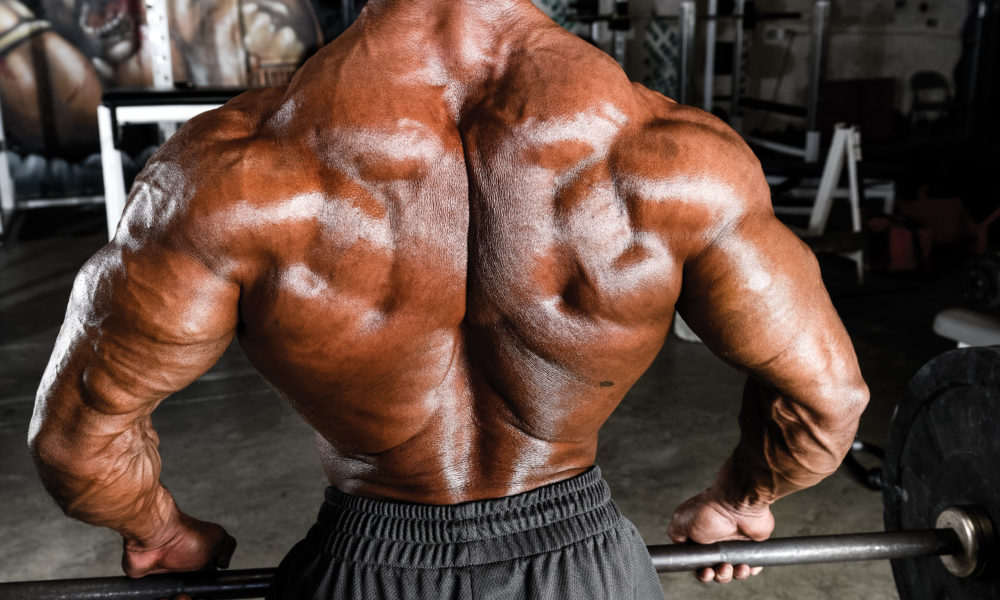

Cable pull-downs and halfhearted one-armed rows won’t get you a big, strong back. Try this explosive workout instead to build power and size.
By Michael Berg, NSCA-CPT
“Olympic-style lifts often have a lot of stops and adjustments along the way, but essentially you are bringing a bar directly from point A, or near the floor, to point B, toward the ceiling. The trajectory of the barbell should be a relatively straight line—think of it like a flattened S-curve. As the lifter, you’re just maneuvering your body around that bar along its path.”
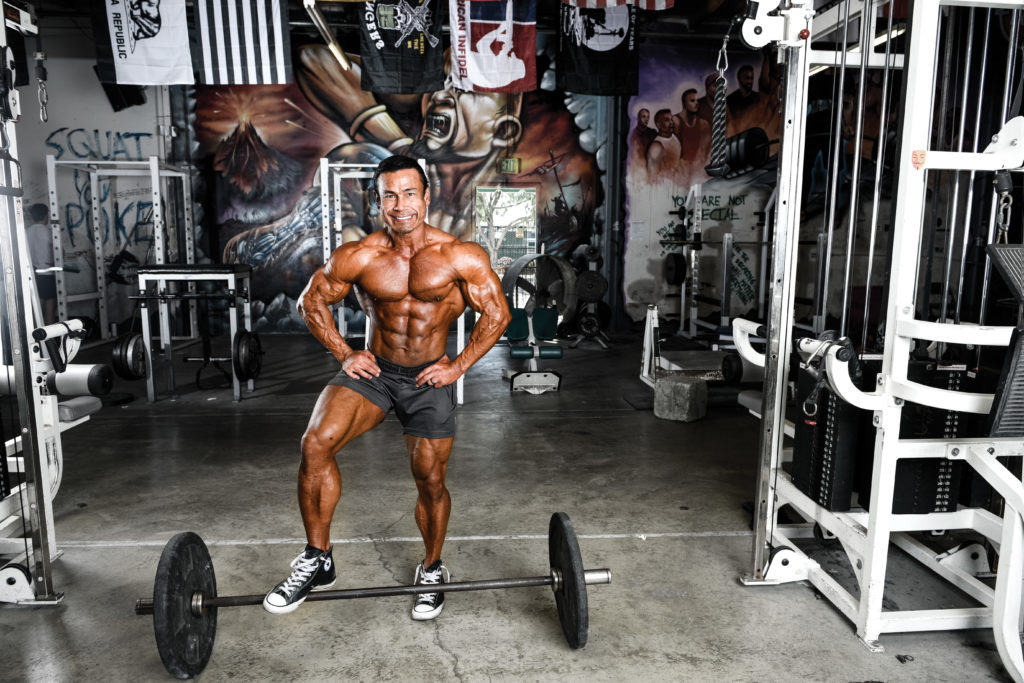
For years, bodybuilding experts have been lamenting the sorry state of back development. Impressively thick, wide rear views are a lost art, it seems—literally and figuratively taking a “backseat” to chest, shoulder, and arm development. People tend to train what they see in the mirror.
Yet not all the blame can be placed on laziness and vanity. It’s not like everyone has discarded back day, trading it out for extra benches and curls. The back is getting trained, just not hard enough.
Thing is, you can’t simply “isolate” your way to huge back development. Pulldowns, one-armed rows, seated cable rows, and even hardcore movements like bent-over rows and T-bar rows aren’t sufficient to stimulate the stubborn muscle fibers that make up the back. You need to augment those bodybuilder favorites with some old-school lifting tactics.
That’s where this workout comes in—a hybrid approach of strength and muscle-building movements, designed by Heather Farmer, a New York–based personal trainer, CrossFit coach, and Olympic weightlifting national competitor currently ranked top five in the USA Weightlifting 63 kg women’s class. Farmer spends her days coaching clients on high-impact complex exercises like the many variations of the snatch, clean and jerk, as well as the deadlift, squat, and overhead press, showing guys that when it comes to muscle mass, the ability to move serious poundage matters.
Lift And Learn
“A lot of bodybuilding programs are designed around isolation-focused dumbbell and cable work,” Farmer points out. “Instead, I suggest combining barbell strength moves to target larger muscle groups with some of those dumbbell and cable isolation-type exercises. Together, the overall intensity and specificity of the workout is increased.”
After a thorough warm-up that should include cardio and light bodyweight exercises, the regimen begins at the base of the back—targeting the erector spinae and lower-back muscles with barbell good mornings. “A lot of people complain of lower-back pain—maybe they sit at a desk all day,” Farmer explains. “Jumping right into heavier sets of deadlifts and similar movements could exacerbate that pain. With a few sets of good mornings to start, you’ll loosen up the entire posterior chain. It’s also a good way to practice keeping a straight back while hinging at the hips, which is the most common trouble spot of a deadlift.” After doing warm-ups as needed to pyramid up to your working weight, you’ll do three sets of 10 reps.
Next comes a superset of dumbbell renegade rows and cross cable flyes. These were chosen to promote blood flow and get the muscles engaged for the heavy-duty lifts to come next. “I paired these two as complementary exercises—the renegade row hits larger muscles of the mid-back, the cable reverse flye will target the smaller muscles like the rhomboid, infraspinatus, and teres minor,” Farmer states. “In addition, to perform correctly, both exercises require core stability, which is critical to a healthy back.”
You’ll do three sets of 10 reps per movement, only stopping long enough to switch between exercises within the superset, and resting 60 to 90 seconds between supersets.
Following that is the heart of the workout—the deadlift, but with a twist on the traditional style. “I suggest a wide grip, a few inches outside of shoulder width,” Farmer says. “By doing that, you’ll engage the upper back more than you do with a traditional deadlift with a narrower grip.” You’ll do eight sets total of 10 reps apiece, choosing a weight that’s about equal to 60 percent of your one-rep max (1RM) for the first four, then upping that to 70 percent of your 1RM for the final four.
—
What’s Your 1RM?
One easy way to estimate your one-rep max without actually maxing out (which isn’t recommended anyway when learning complex power movements) is to figure out how much weight you can handle for 10 reps—where you fail at that 10th rep and can’t manage the 11th. Multiply that weight by 1.33. For example, let’s say you can deadlift 225 pounds for 10 reps: 225 x 1.33 = 299.25, which you can round to 300. Base your percentage calculations off of that 300—for instance, 70 percent is 210.
Finishing Touch
The deadlift is followed by a second superset: the low-hang power clean followed by pull-ups. This time, you’ll be edging closer to your one-rep maximum, doing fewer reps per set—specifically five sets of five reps, all with a weight that represents 80 percent of your one-rep maximum for the power clean.
“The low-hang power clean is here because it thoroughly engages the lower back during the ‘hang’ portion of the rep and also demands explosive power to finish the pull, firing the traps, rhomboids, and lats. This is a nontraditional bodybuilding move that still works the desired muscle groups—so it’s great for variety.”
The workout wraps up with two more familiar exercises: five sets of 10 reps of dumbbell bent-over rows—these are like barbell bent rows except holding two dumbbells instead of a bar—and side cable pulls for five sets of 10 reps per side. “These are great finishers because they come with a relatively low injury risk when you’re fatigued, yet still provide stimulus,” Farmer says.
A Strong Argument
While some guys may shrug off the idea of trading in the comfort of their standard back routine for one that showcases so many strength moves, there’s ample proof that it can lead to more muscle mass. “In my experience with clients, strength gains do equate to muscle gains,” Farmer says. “By increasing overall strength and power, you prepare a better foundation to then sculpt.
“And besides,” she adds with a smile, “a lot of Olympic lifters I know have backs that are muscular and ripped, so we must be doing something right in that department.”
THE HIGH-IMPACT BACK ROUTINE
Exercise Sets Reps* Weight
Barbell Good Morning 3 10 40% 1RM (light)
Dumbbell Renegade Row 3 10 70% 1RM
superset with
Cross Cable Flye 3 10 70% 1RM
Wide-Grip Deadlift 4 10 60% 1RM
4 10 70% 1RM
Low-Hang Power Clean 5 5 80% 1RM
superset with
Pull-Up 5 To failure Bodyweight
Bent-Over Dumbbell Row 5 10 80% 1RM
Side Cable Pull 5 10 per side 70% 1RM
* The reps listed are working sets—use warm-up sets as needed to get up to your working-level weight.
[exercise descriptions]
Barbell Good Morning
Start: Set a light barbell across your upper back, feet shoulder-width apart with a slight bend in your knees. Your chest should be out and eyes focused ahead to maintain the natural alignment of your spine.
Action: Initiate the movement by shifting your glutes back and bending forward at the hips. Lower your upper body until it’s parallel to the floor or as close as you can manage. From there, contract your lower back, glutes, and hamstrings to raise your torso back to the starting position.
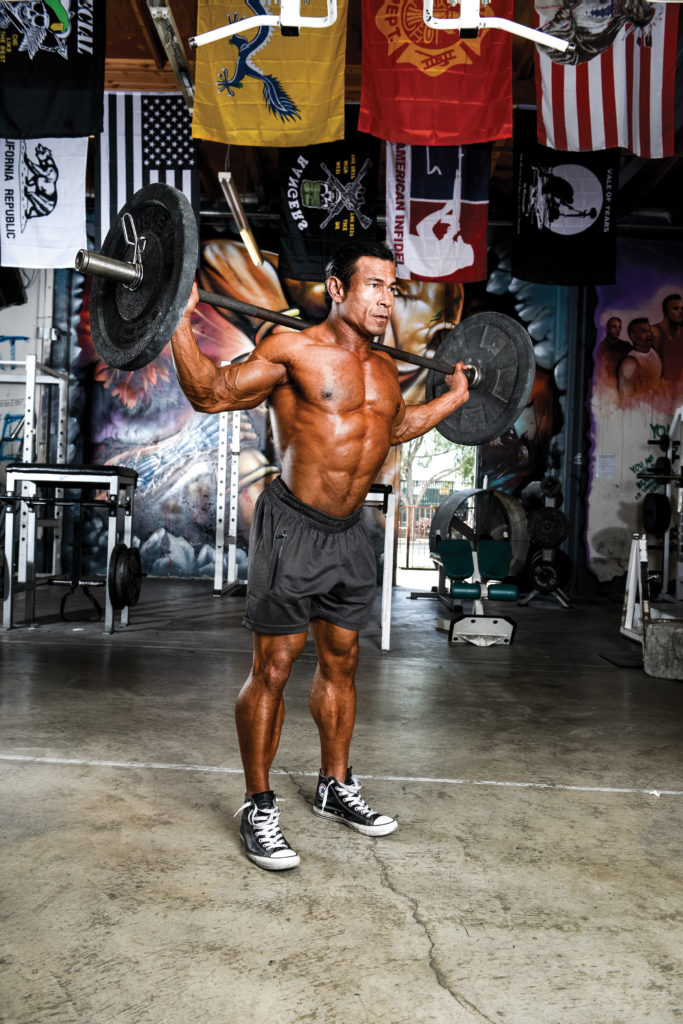
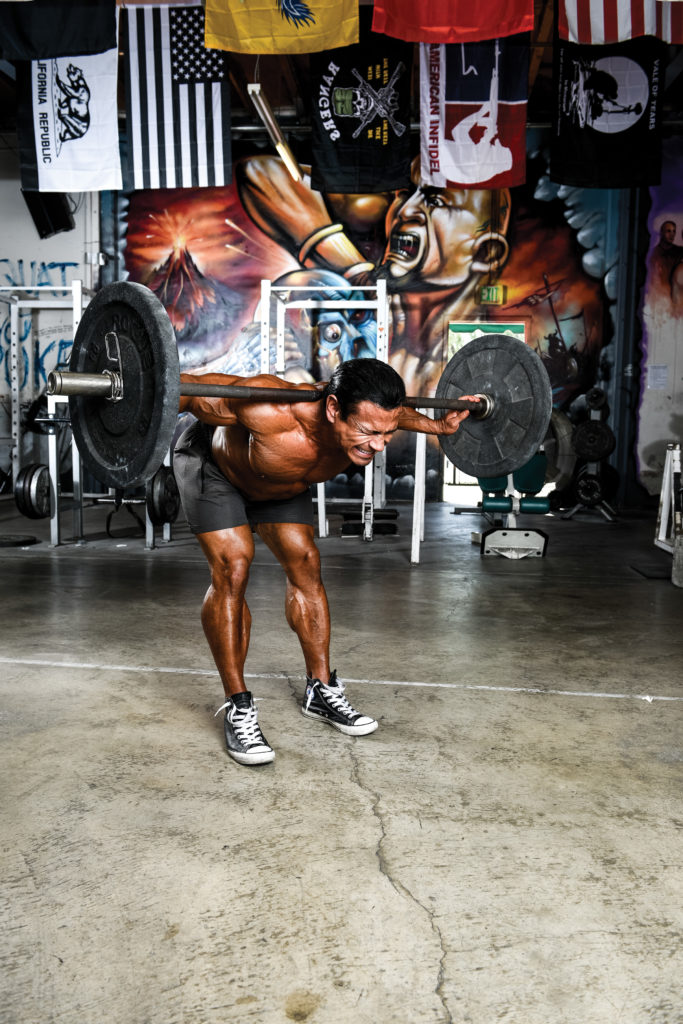
Dumbbell Renegade Row
Start: Place two dumbbells on the floor in front of you and get down into a four-point position, your lower body balanced on your toes behind you, legs splayed, and one hand holding each handle.
Action: From this position, alternately row one bell up to your flank and lower it to the floor. One lift with each arm equals one rep.
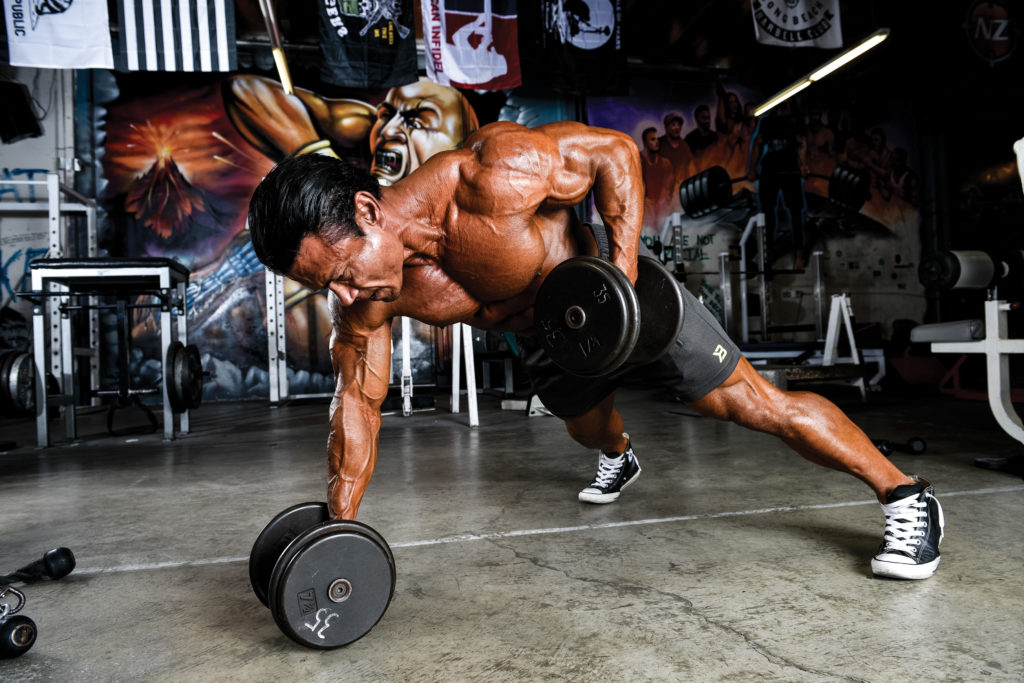
Cross Cable Flye
Start: Take a position in the center of a crossover station, grasping the opposite side upper-pulley cable in each hand. You can either grab the ball end of the cable or use D-handles. Take a solid stance with your feet just outside shoulder width, with your torso upright and core tight.
Action: Simultaneously pull each cable across the front of your body, keeping your elbows straight—cross your arms at the end of each rep, then return to the start, not letting the weight stacks touch down between reps.
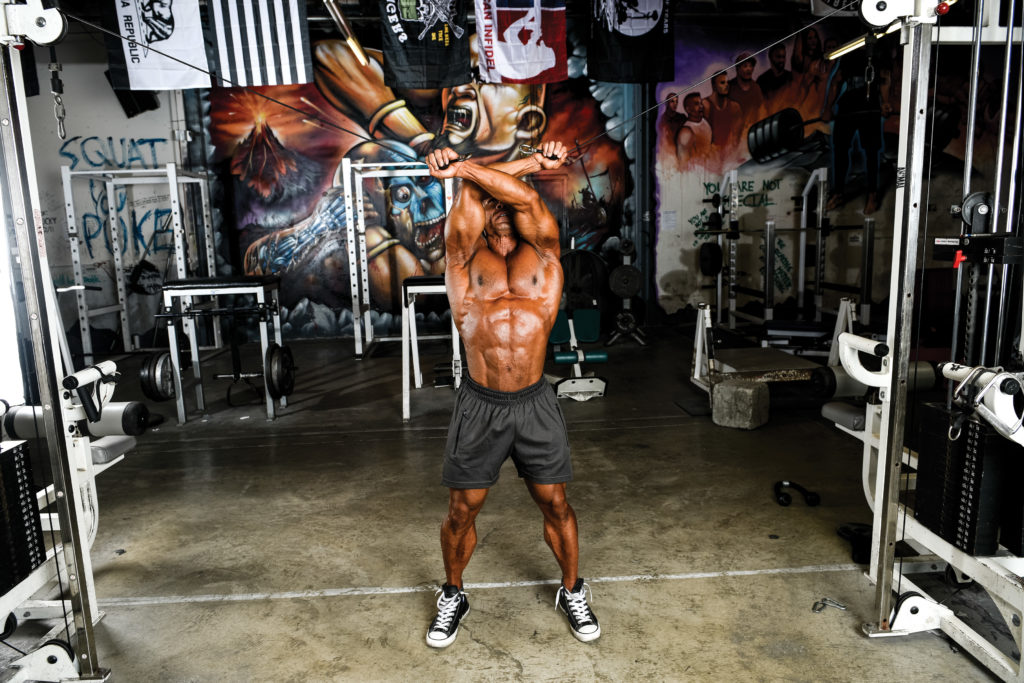
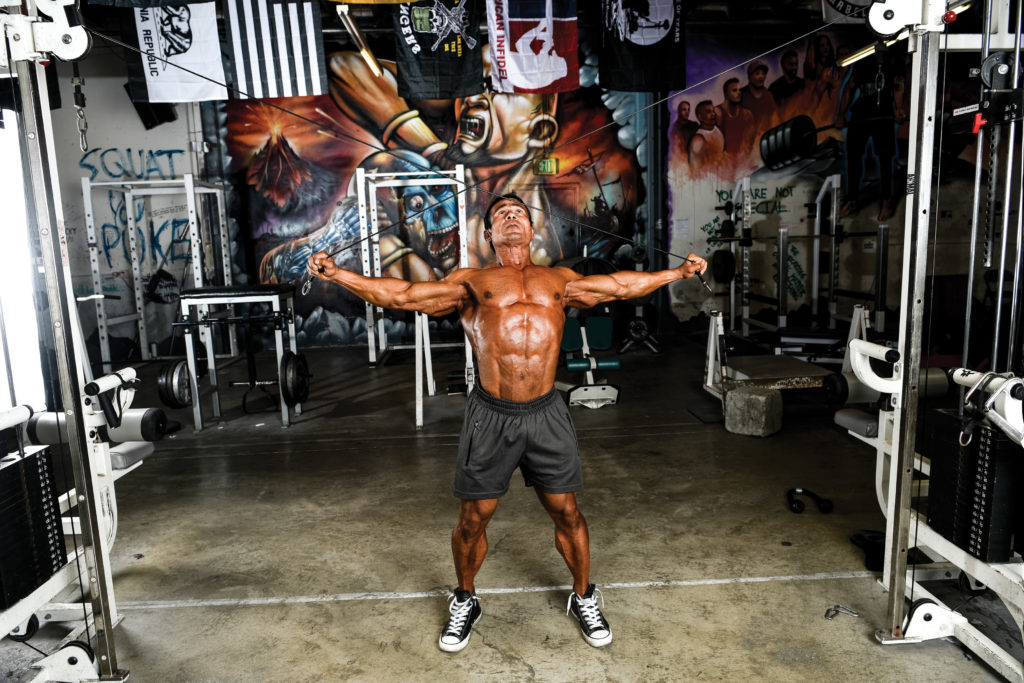
Wide-Grip Deadlift
Start: With your toes beneath the barbell, squat down and grasp it with a wide grip, well outside of shoulder width. Allow the bar to rest flush against your shins.
Action: With your chest up and back flat, lift the bar from the floor by extending your hips and knees to full extension. Be sure to keep your arms straight throughout as you drag the bar up your shins and thighs until you are in a standing position. Squeeze your back, legs, and glutes, then lower the bar downward along the same path until it touches the floor. Allow the bar to settle before beginning the next rep.
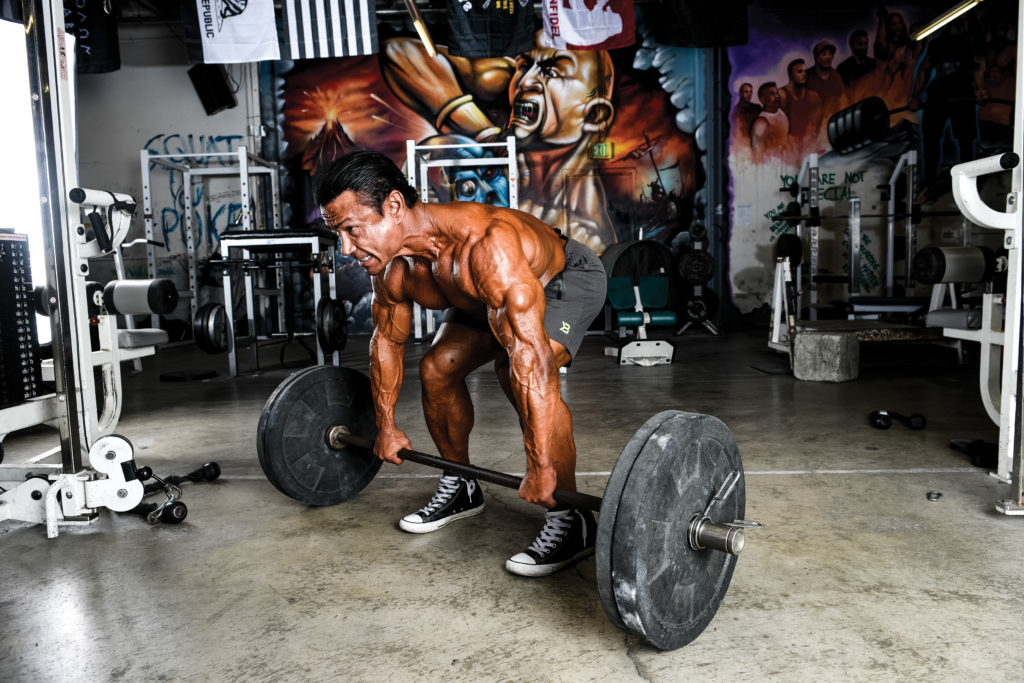
Low-Hang Power Clean
Start: Stand in front of a barbell set in a power rack one inch below your knee level. Bend at your hips and knees to take an overhand grip just outside shoulder width on the barbell.
Action: Powerfully extend at your hips and knees to propel the bar upward along your body, “jumping” the weight up. At this point, you’ll bring your elbows under the bar, flipping your grip to “catch” the bar at shoulder level in the rack position. Reverse the motion to the racked position and repeat.
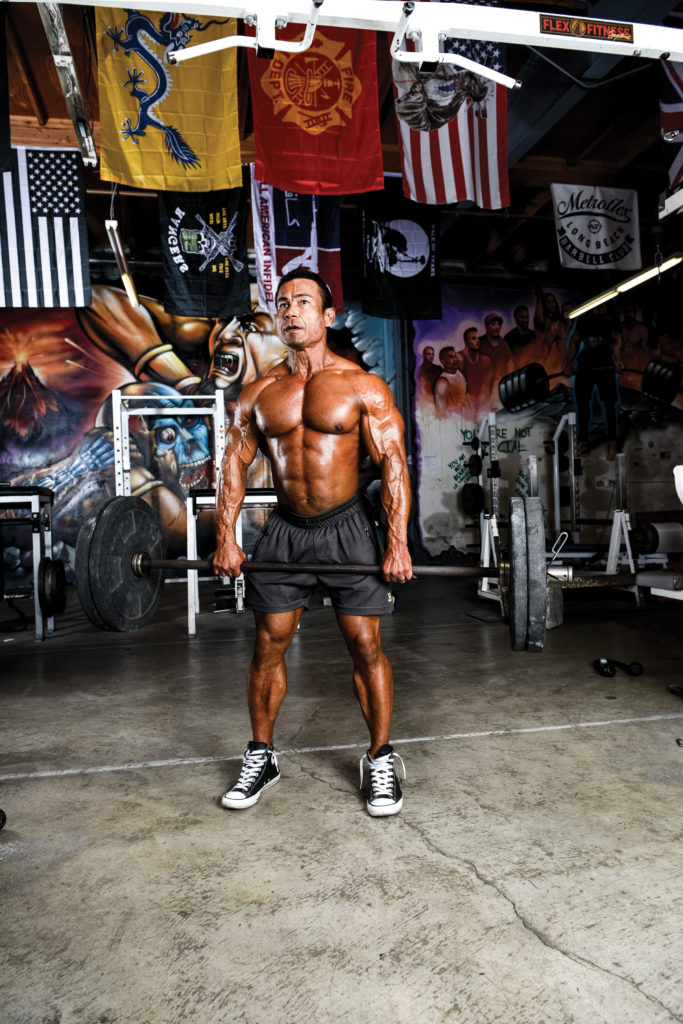
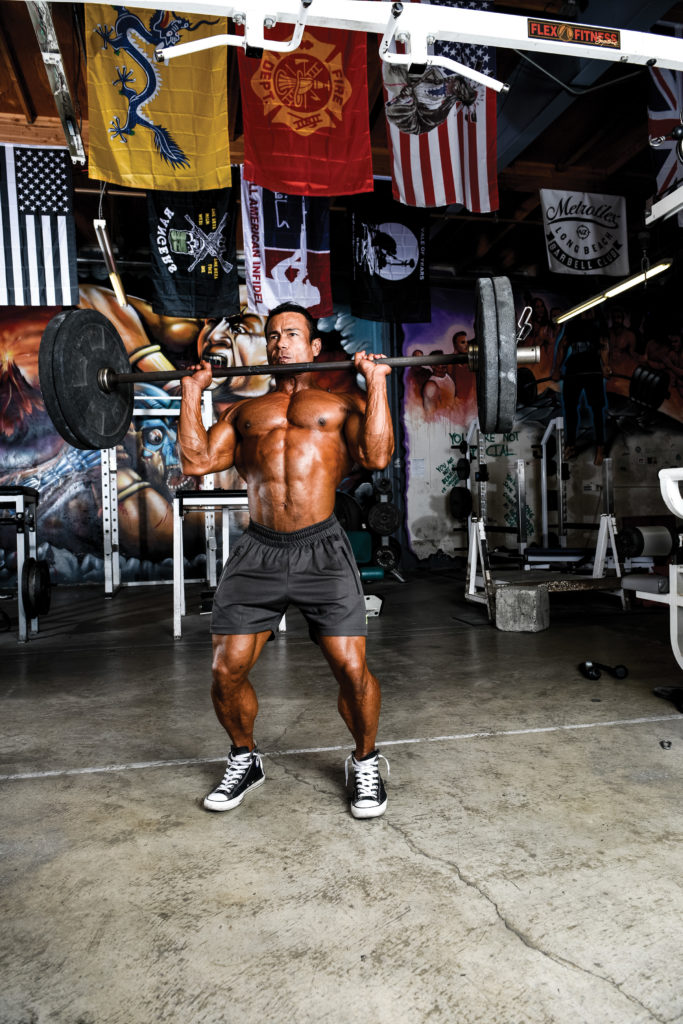
Pull-Up
Start: Grasp a fixed overhead bar with a wide overhand grip, wrapping your thumbs around the bar. Hang freely from the bar, arms fully extended and ankles crossed behind you.
Action: Contract your lats to raise your body upward, concentrating on keeping your elbows out to your sides and pulling them down to your flank to raise yourself. Hold momentarily as your chin crosses the level of the bar and then lower yourself down to the dead-hang, elbows-extended position.
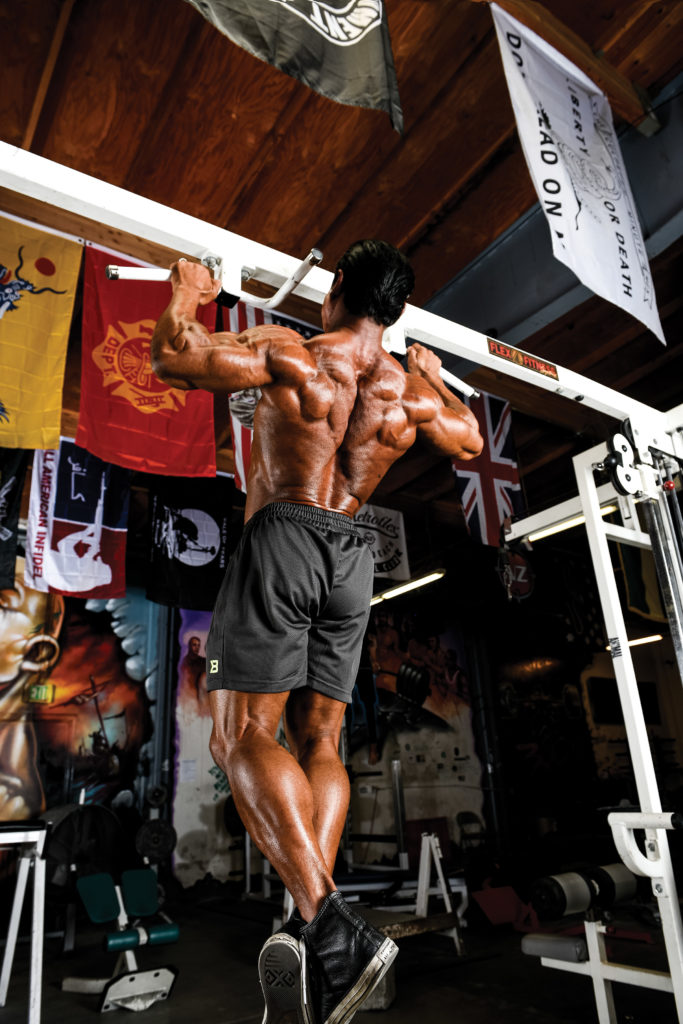
Bent-Over Dumbbell Row
Start: Standing with your feet shoulder-width apart, knees slightly bent, grasp a dumbbell in each hand. Lean forward at your hips until your torso is roughly parallel with the floor. The dumbbells should hang straight down next to your shins.
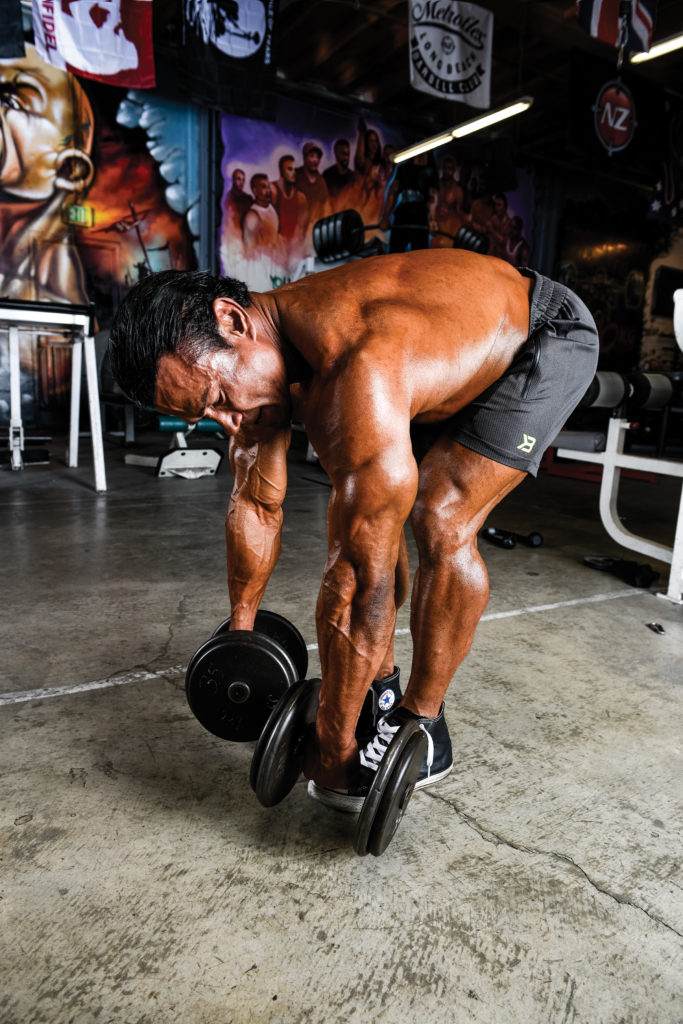
Action: Without raising your upper body, pull the dumbbells up toward each side of your abdomen, bringing your elbows high and above the level of your back. Hold the weight in the peak-contracted position for one second, then slowly lower along the same path.
Side Cable Pull
Start: Stand in front of a cable apparatus outfitted with a rope attachment. Grasp one end of the rope in your left hand and turn to the side so your left foot and arm are closest to the weight stack. Take a few steps away so the stack is lifted a few inches and your left arm is extended.
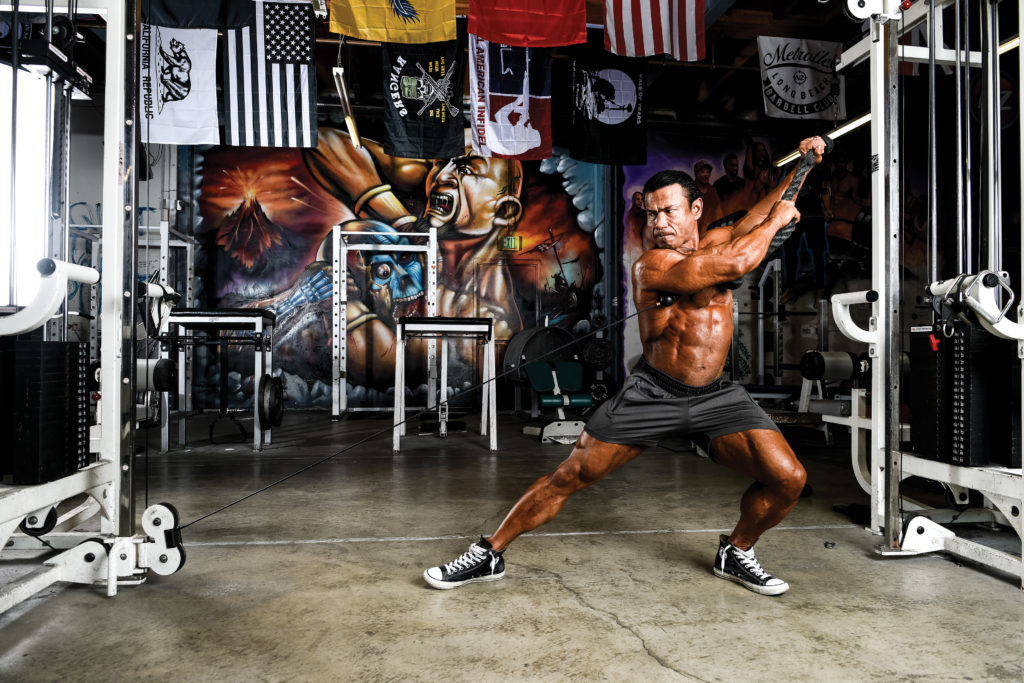
Action: There are two steps to this move, an initial pull and then a secondary twist and pull. Begin by pulling the rope toward your body with your left hand. Next, reach across with your right hand and grasp the middle of the rope. Now, bend your right elbow as you twist your body, bringing your right hand all the way up to your right shoulder. Return to the start and repeat—don’t let the weight stack touch down between reps. IM






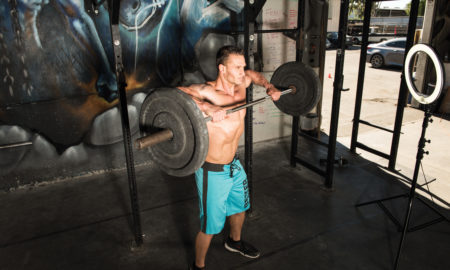
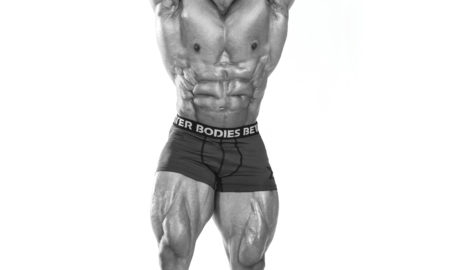














You must be logged in to post a comment Login